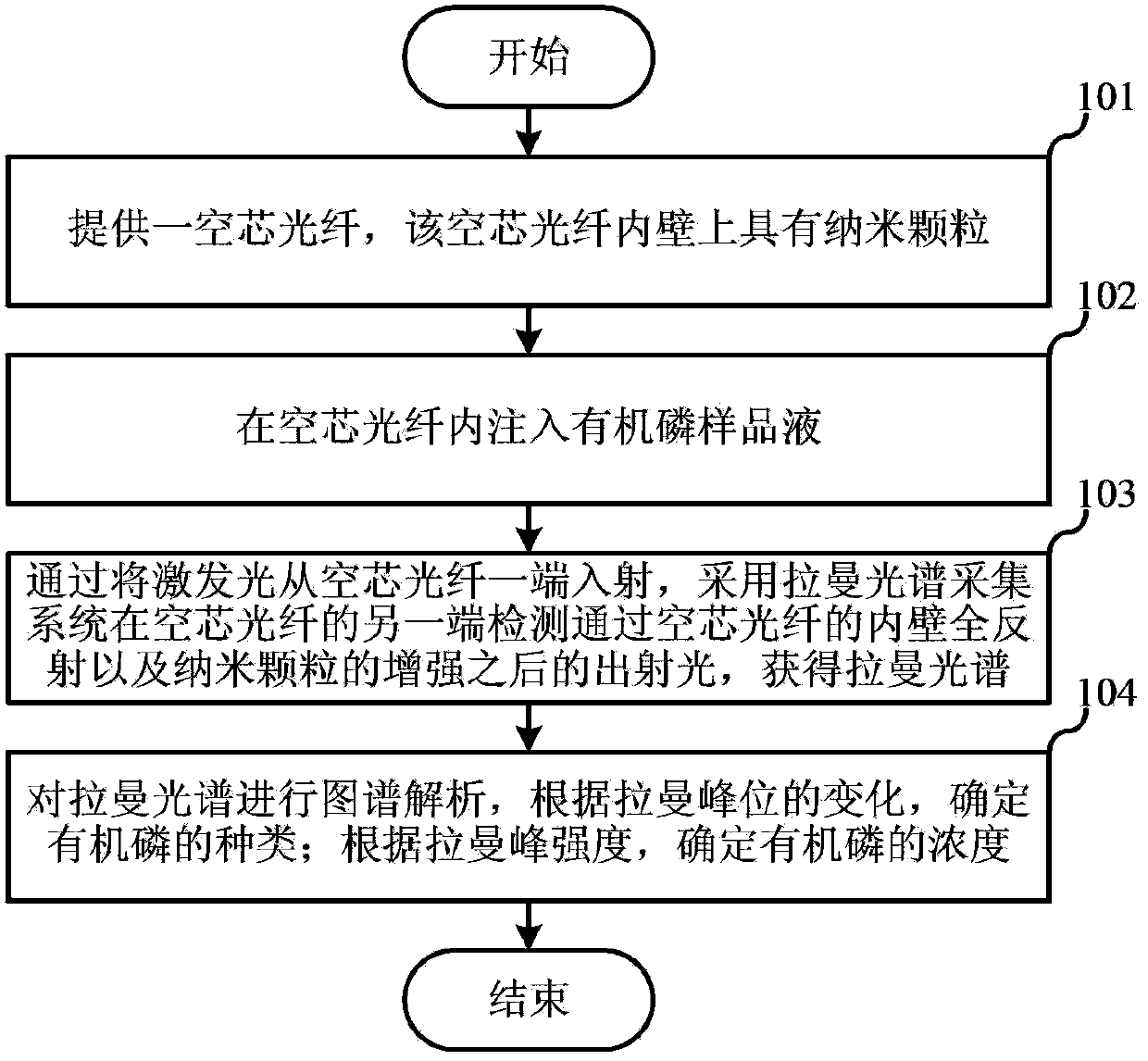Organophosphorus detection method based on hollow-core fiber
The technology of a hollow-core optical fiber and a detection method, which is applied in the field of analytical chemistry, can solve the problems of complicated preparation process of SERS substrate, waste of energy and resources, inability to reuse, etc., and achieves the effects of being favorable for detection, low cost and simple manufacturing process.
- Summary
- Abstract
- Description
- Claims
- Application Information
AI Technical Summary
Problems solved by technology
Method used
Image
Examples
Embodiment Construction
[0028] In order to make the object, technical solution and advantages of the present invention clearer, the implementation manners of the present invention will be described in detail below in conjunction with the accompanying drawings. However, those of ordinary skill in the art can understand that in the implementation manners of the present invention, many technical details are proposed for readers to better understand the present application. However, even without these technical details and various changes and modifications based on the following implementation modes, the technical solution claimed in each claim of the present application can be realized.
[0029] A preferred embodiment of the present invention relates to a method for detecting organic phosphorus based on a hollow-core optical fiber. The specific process is as follows: figure 1 shown, including the following steps:
[0030] Step 101, providing a hollow-core optical fiber, the inner wall of the hollow-cor...
PUM
| Property | Measurement | Unit |
|---|---|---|
| diameter | aaaaa | aaaaa |
| diameter | aaaaa | aaaaa |
Abstract
Description
Claims
Application Information
 Login to View More
Login to View More - R&D
- Intellectual Property
- Life Sciences
- Materials
- Tech Scout
- Unparalleled Data Quality
- Higher Quality Content
- 60% Fewer Hallucinations
Browse by: Latest US Patents, China's latest patents, Technical Efficacy Thesaurus, Application Domain, Technology Topic, Popular Technical Reports.
© 2025 PatSnap. All rights reserved.Legal|Privacy policy|Modern Slavery Act Transparency Statement|Sitemap|About US| Contact US: help@patsnap.com



